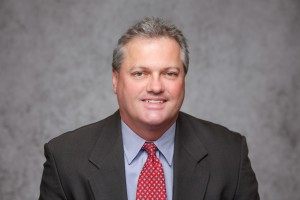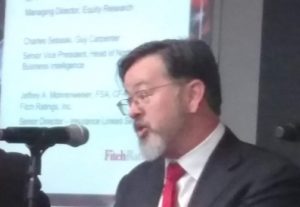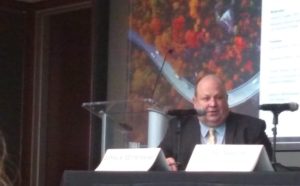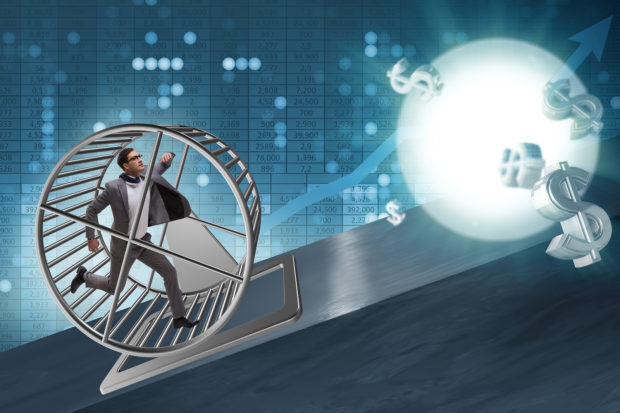Property/casualty insurance carrier executives are challenged to predict the likely state of the market as they shape go-forward strategies for their companies. While 2020 may be a bit off course, the typical state is soft, analysts say.
 During a nuanced discussion at the Fitch Ratings North American Insurance conference in November, two rating analysts, a Wall Street analyst and a reinsurance broker representative distinguished between “softening,” “hardening,” “soft” and “hard” markets. They disagreed on whether excess capital fuels softer conditions but generally agreed that “hardening” conditions are visible in many lines and will accelerate in 2020.
During a nuanced discussion at the Fitch Ratings North American Insurance conference in November, two rating analysts, a Wall Street analyst and a reinsurance broker representative distinguished between “softening,” “hardening,” “soft” and “hard” markets. They disagreed on whether excess capital fuels softer conditions but generally agreed that “hardening” conditions are visible in many lines and will accelerate in 2020.
Fitch Ratings defines a hard market as one in which “pricing and conditions are consistent with generating an adequate or better return on capital,” according to James Auden, managing director and North American head of Non-Life Insurance Ratings. “Soft market means that pricing is generating inadequate returns,” he said. He contrasted the rating agency perspective with insurance brokers, who define hard and soft markets according to whether insurance prices are going up or down. “We refer to that as hardening or softening markets.”
“In aggregate, we would say that the market is normally a bit soft,” Auden noted, suggesting that while companies like Progressive earn above-average returns most of the time, the average company in the industry isn’t going to do so in most years. “Hard markets are very rare, and they don’t last long,” he said, noting that he had seen only one true hard market—from roughly 2003 to 2007.

“Hard markets are very rare, and they don’t last long.”
James Auden, Fitch Ratings
“To get into a hard market, you need that shock to the system where capital is diminished, you have large losses and then a market reaction, pricing-wise,” he said. “And they don’t last too long because success breeds competition. [If] you have a great pricing opportunity, companies try to imitate the successful [insurers], and it goes away pretty quickly.”
Offering a reinsurance broker perspective, Charles Sebaski, a senior vice president and head of North American Business Intelligence for Guy Carpenter, agreed with Auden. “The cycle, we would believe, has everything to do with capital supply and demand—[and] it’s traditionally a bit soft. The world is awash with capital. There’s typically more capital out there than there is good risk, and so consequently, there’s always downward pressure on pricing. We would think that that is the normal state.”
Paul Newsome, managing director of equity research for Sandler O’Neill + Partners L.P., disagreed, first throwing cold water on Auden’s “holistic view” of margins rising across the industry and then attacking Sebaski’s focus on capital.
Charles Sebaski, Guy Carpenter
“The cycle has always been about individual businesses, and individual businesses can go through very different environments and changes, both from a technological and a competitive perspective,” Newsome said. While segments of commercial insurance and homeowners are getting price increases—”and in some cases, hardening into the harder definition of margin improvement”—in workers compensation and personal auto, both prices and margins are declining.
In addition, “there’s always been plenty of capital, and capital keeps accumulating over time. The capital markets are always happy to take 7 percent of your money and give you a whole bunch more in equity capital. We’re really good at that. [And] pension funds are coming in with money that’s so dumb, it’s just incredible, right?” he said, jokingly alluding to alternative capital—the special focus of another panelist, Jeff Mohrenweiser, senior director for Insurance Linked Securities and Insurance Model officer for Fitch.
For his part, Mohrenweiser agreed with Newsome that industrywide margin and price changes up and down are a thing of the past. “Companies are doing a very good job of finding their niche, whether it’s in workers comp or personal auto. They’re really becoming experts in those lines of business. So, they’re able to get rate where they want to; they’re able to withdraw when they want to,” he said, concluding that “more sophistication out in the market [is] leading to a lot of subdued volatility in the cycle.”

“You’re not going to get anything violent unless you get some exogenous risk change.”
Paul Newsome, Sandler O’Neill + Partners, L.P.
The panel followed a keynote presentation by Mark Lyons, chief financial officer of American International Group, who talked about how AIG executives are correcting problems of inadequate margins line by line, by first redefining risk appetite—cutting capacity in lines like D&O and commercial property—before attacking pricing. (See related article, “Remaking AIG: CFO Describes Changes in Underwriting, Distribution and More” in the Jan-Feb edition of Carrier Management’s print magazine.)
Referring at one point to “AIG’s heft,” or material market share in some areas, Lyons noted that as “indirect consequence” of that collection of changes, “we might be driving the market.”
“We had to do what was right for us,” he said. “If you look at it from an industry perspective, there are stronger, larger companies that can make actions that are beneficial for all. But people don’t need to follow it. They can have their own compass, their own markers. In other cases, it may lift all boats.”
During the panel discussion, Newsome said, “Hard markets come about for two reasons. The first is that the underlying combined ratio, normalized for [catastrophe losses], is so bad” that no carrier can justify current pricing levels. “That’s what you’re seeing in most lines of commercial insurance—commercial auto, D&O, at AIG in just about everything they’re doing—[carriers] recognizing that the underlying combined ratio is just too high,” he said. “That’s when you get small price increases. The last time we saw that was [after] Hurricane Katrina or the hard market that started post-9/11.”

“More sophistication out in the market is leading to a lot of subdued volatility in the cycle.”
Jeff Mohrenweiser, Fitch Ratings
“That can continue for quite some time because they’re chasing the underlying” combined ratio result. “It can take many years,” he said, asserting that the second driver of hard markets is a change in the perception of risk. “The classic example is the 9/11 disaster. When 9/11 happened, it was a big risk, but there was plenty of capital. It didn’t take out a sustained amount of capital from businesses.” What it did was expose to carriers that their “clash risk calculations were all wrong. Auto, workers comp, aviation—those are all considered uncorrelated risks. Every underwriter across the globe had to go in and say, ‘Oh my goodness, I have to change my model,’ and that creates shock increases, which is what people think of as the classic hard market.”
That’s not happening now except perhaps in areas of California exposed to wildfires, Newsome said, concluding that hardening will continue for quite some time in the commercial markets he cited. “You’re not going to get anything violent unless you get some exogenous risk change.”
Sebaski, using Newsome’s argument to link market conditions back to capital, recalled that he was an aviation broker when 9/11 happened and capacity dried up. Changes in risk perception drive changes in “the appetite for deployment of capital” even when there is capital available to support insurers experiencing catastrophe losses, he said.
He agreed with Newsome, however, that viewing the state of the market in aggregate is incorrect.
“It’s too broad, it’s too global, it’s too nuanced,” he said, adding that technology has accelerated feedback loops about where underwriting profit problems emerge. “When there are challenges by line of business, there’s not as many players out over their skis,” he said. “The ability to get to that 115 combined ratio that we might have seen at the turn of the century—the last transition from soft to hard market—is unlikely to repeat because there’s nobody out there, or very few, that are writing at one-and-a-half or two-times capital,” he said.
Turning to one individual line of business—commercial auto—the panelists all agreed that underwriting profit issues still need attention. “I have a personal view that most multiyear dysfunctional lines of business are not fixed by rate. They are fixed by some sort of underwriting change,” said Newsome. “Insurance companies throwing rate at things will ultimately fail.”
After Mohrenweiser suggested that insurance carriers are just not grasping how the Amazons, DoorDashes and Ubers of the world are changing exposures with people taking second jobs to make deliveries, Sebaski said that “old school, traditional fleet pricing methodology” is probably going to go away at some point—to be replaced by a usage-based insurance framework. Insurers will have a better “understanding of the utilization of vehicles and who’s driving them when, being able to—in real time—cross-reference the fact that if you had a driver on the road for 20 hours,” it increases the probability of that vehicle being in an accident.
“The industry can’t do anything about the award size—that is societal in nature. But you can get back to risk selection and the identification and understanding of the risk dynamics,” he said, reinforcing ideas presented by AIG’s Lyons about other lines of business. “To correct something that is structurally flawed,” there needs to be “a change in the basis of how the risk is written.”
More broadly, Newsome said that, in general, a hard market involves fundamental underwriting and policy changes, not just rates chasing claims inflation.
Auden then asked the panel about the much-discussed topic of social inflation—rising litigation costs—and carrier reactions to that.
“The things that AIG is doing are beneficial,” said Newsome, referring to Lyons’ overall theme of reducing limits that had gotten too high and coverage attachments that had gotten too low, as opposed to starting with rate changes. That “needs to change broadly”—across carriers, he said.
“If everyone’s [policy] retention is 80-90 percent, and it doesn’t move over time, that’s not a hard market. That’s just messing around with the portfolio a bit. The real hard market’s going to include a shift in portfolios, and that’s going to have to come probably when you’ve got meaningful changes in the limit levels” and the coverages change, Newsome added.
Sebaski agreed. “If every loss is a limit loss, it becomes a cat risk. And the business isn’t priced at a cat-risk rate on line,” he said. “You can’t fix that by getting rate.” He also noted that traditional hard markets of the past had price hikes “so rich” that they attracted opportunists. Now, “while people talk about the hardening market in commercial auto, you don’t see a flood of new entrants saying, ‘I want a piece of that business.'”
“It’s not there yet,” he said. “So pricing may be going up, but it’s not a hard market.”





















 Homeowners Critical of FAIR Plan, State Farm A Year After LA Wildfires
Homeowners Critical of FAIR Plan, State Farm A Year After LA Wildfires  Study Finds Rate of U.S. Coastal Sea Level Rise Doubled in the Past Century
Study Finds Rate of U.S. Coastal Sea Level Rise Doubled in the Past Century  U.S., UK, and Canada Consumers Suffer the Most Data Breaches: Report
U.S., UK, and Canada Consumers Suffer the Most Data Breaches: Report  Insurance Costs, Climate Concerns Factor Heavily in U.S. Home Buying Decisions
Insurance Costs, Climate Concerns Factor Heavily in U.S. Home Buying Decisions 